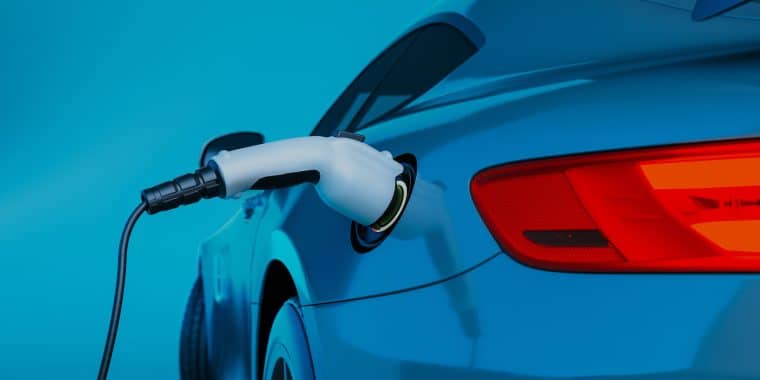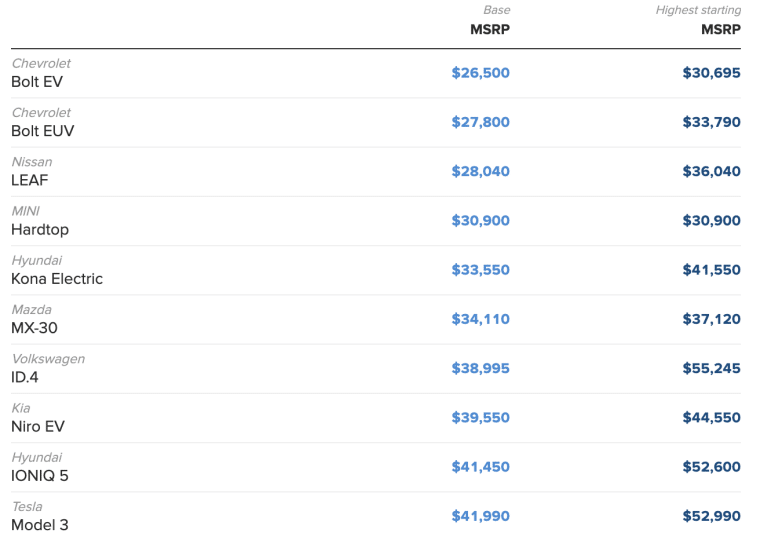
Automakers like Tesla, GM, and Fisker are focusing on manufacturing process innovations to reduce the cost of electric vehicles (EVs).
Tesla plans to cut manufacturing costs of its upcoming models by 50%.
GM’s electric Equinox SUV is set to be priced around $30,000 this fall, while VW and Fisker plan to launch new EVs significantly below average U.S. new-vehicle prices.
These manufacturing advancements could make EVs more accessible to mainstream consumers.
“For Tesla to go mass-market, they have to have a cheaper car,” said Wedbush analyst Dan Ives.
“And mass market is the holy grail.” The rise of mass-market EVs will be a milestone, both environmentally and economically, as well as politically, with the Biden administration pushing for EV adoption.
The Role of Tax Credits and Financing Options
While tax credits, such as the $7,500 credit expanded last summer, have played a role in reducing the cost of EVs for consumers, manufacturing process improvements are becoming even more crucial.
In addition to tax credits, there are now more financing options available in the auto loan market designed specifically for environmentally friendly cars.

Impact of Lower EV Prices
Reduced prices for EVs will challenge the notion that they are only for the wealthy, with upcoming models expected to start between $25,000 and $30,000.
This development could potentially reshape the automotive industry, making EVs more popular and solidifying the status of major automakers like Tesla, Ford, and General Motors as mainstream carmakers.
The Biden administration’s push for EV adoption aligns with these price reductions, as lower costs could accelerate the transition to electric transportation.
What Consumers Can Expect from Budget EVs
Budget-friendly EVs will likely offer fewer features than their more expensive counterparts, but they will still be comfortable and practical.
Analysts predict that models such as Fisker’s PEAR will be similar in size to Honda’s CRV or Toyota’s RAV4, but at a lower price point.
The lowest-cost EVs may have around 250 miles of range between charges, which is similar to existing models like the Nissan Leaf.
Stephanie Brinley, associate director of research at S&P Global Mobility, stated,
“There’s nothing wrong with having a basic car as a first car. It’s a reasonable expectation to have a lower feature point.”
Consumers are expected to insist on keeping popular safety features, even in less expensive EVs.
Automakers’ Strategies for Cost Reduction
Tesla aims to lower costs through new or reimagined factories, greater scale, and advances in battery technology.
Ford expects simple scale economies to improve EV operating profit margins by 20 percentage points by 2026, with another 25 points coming from falling battery costs and redesigning vehicles to use smaller batteries.
Fisker has chosen to save by outsourcing production of the PEAR to Foxconn.
What's the Best Crypto to Buy Now?
- B2C Listed the Top Rated Cryptocurrencies for 2023
- Get Early Access to Presales & Private Sales
- KYC Verified & Audited, Public Teams
- Most Voted for Tokens on CoinSniper
- Upcoming Listings on Exchanges, NFT Drops